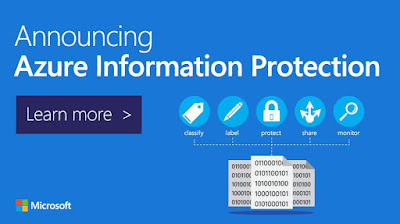What is Azure Information Protection?

For creating and protecting the files and emails of any company, a cloud-based the platform is introduced by Microsoft named, Azure DevOps Information Protection (AIP). By using AIP , we can create and protect the files and emails by using our own labels. Labels can be implemented by admins who specify the conditions and rules, manually by clients or together where clients are given suggestions. In Azure online training Information Protection, the admin has to form a label with rules that finds sensitive data. If a client stores a word file, that has a credit card information, then they can see a custom tooltip that suggests the label that the admin has formed. This label separates the file and protects it. When the content is classified, then we record and manage its usage. We can examine data flows, to get better insights into our business, find unsafe actions and take the right actions, track paths to files, avoid data leakage or misuse and more. Classificat...